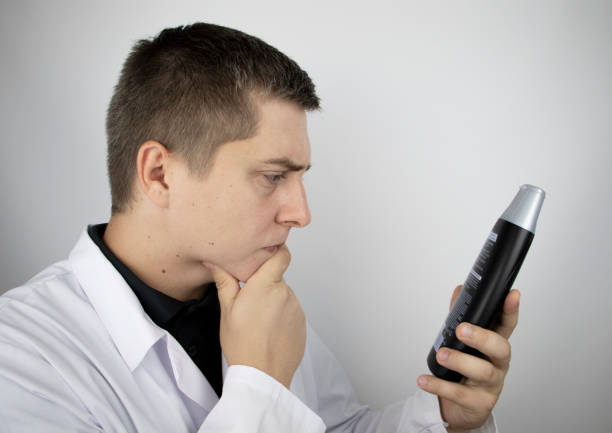Why Use Preservatives in Cosmetics?
Preservatives of Cosmetics
There are many Raw materials used in the manufacturing of Cosmetic preparations that are sensitive to biological degradation (the decay that results from organisms such as fungi and bacteria performing in the presence of excess moisture and air for an extended period of time) by micro-organisms. In cosmetics ingredients like glycerin, sorbitol is commonly used and this provides a source of carbon for microorganisms, and such substances as amino acid derivatives and proteins provide a source of nitrogen for them. Therefore it gets easily contaminated by fungi, bacteria, and other microorganisms. Preservatives are therefore important to add to products for two reasons:
1) Prevent spoilage, to prolong the shelf-life of the product.
2) Protect the consumer from the possibility of infection.
Bacteria, fungi, and Yeast contaminate the cosmetic product and proliferate inside them. During manufacturing of cosmetic products precautious are therefore necessary to stop bad manufacturing practices.
Characteristics of microorganisms that contaminate cosmetics
|
|
Fungi |
Yeasts |
Bacteria |
|
Optimum growth temperature |
20 - 30° |
25 - 30° |
25 - 37° |
|
Nutrients |
Starch |
Sugars |
Proteins, amino acids |
|
Optimum growth pH |
Acidic |
Acidic |
Weakly acidic-weakly alkaline |
|
Aerobic/anaerobic |
Aerobic |
Aerobic-anaerobic |
Usually aerobic, sometimes anaerobic |
|
Major products |
Acids |
Alcohols, acids carbon dioxide |
Amines, ammonia acids, carbon dioxide |
|
Typical species |
Penicillium
|
Saccharomyces |
Bacillus subtilis |
Primary and Secondary Contamination
It is undesirable to manufacture or sell cosmetics that are contaminated by pathogenic microorganisms. If the manufacturing process is unhygienic, there will be deterioration in product quality as time goes on and skin irritation will result from this.
Contamination by microorganisms arising during production is called primary contamination and that arising during the use of the product by the consumer secondary contamination. Primary contamination often arises from bacteria in water (gram-negative) while secondary contamination often results from bacteria from the hands and usage environment (gram-positive cocci and gram-positive).To prevent primary contamination from arising during manufacturing and filling, it is necessary to provide a clean working environment. Contamination may be prevented by strictly observing good manufacturing practices (GMP).
Every country has its own standards for live bacteria counts in the final product. CTFA states that the number of live bacteria in 1g of the product must be less than 500 for baby products and eye makeup cosmetics and less than 1000 for other products and that pathogenic bacteria are unacceptable. Coagulase-positive Staphylococcus aureus, Escherichia coli species, and Pseudomonas aeruginosa are examples of pathogenic bacteria which must not be detected in cosmetic products. There is a large number of bacteria on hands and faces and cosmetics are contaminated by them when we use them or leave the cosmetic lid open for some time. Preservatives are added to cosmetics to prevent contamination which they do by suppressing the proliferation of microorganisms and killing them in time, thus preventing deterioration of the product.
Antimicrobial agents come under two headings depending on the reason for using them.
Preservatives
Preservatives are added to cosmetics to suppress the proliferation of microorganisms that have contaminated them and to kill them in time, thereby preventing deterioration of the product. Suppressing the proliferation of microorganisms is called microbiostasis and preservatives make use of this action to prevent product deterioration. Preservatives do not have such a strong effect by themselves; therefore they are blended with the ingredients and gradually kill the contaminating microorganisms in time. Example paraoxybenzoates are commonly known as parabens.
Disinfectants and germicides
These are added to cosmetics for sterilizing the surface of the skin and for sterilization during the manufacturing process. Disinfectants and germicides require that they kill germs or reduce their numbers in a short period of time. The disinfectants and germicides are added in various cosmetic products like anti-acne products, deodorants, etc. their mechanism is to suppress the proliferation of the germs on the skin preventing its occurrence as well as its aggravation, and kill or reduce the number of bacteria in the armpit thought to be a cause of body odor. It can be used in dandruff control products because they have the ability to suppress Pityrosporum ovale, a yeast suspected of causing it. Commonly use RM are benzalkonium chloride, chlorhexidine gluconate, and trichlorocarbanilide (TCC).
by Svetlya Anukudinova
Wed, 17 May 23 14:31:48
Topics
Jammu & Kashmir - History, Culture & Traditions | J&K Current Trends | Social Network | Health | Lifestyle | Human Resources | Analytics | Cosmetics | Cosmetology | Forms | Jobs
Related blogs
Drugs and Cosmetics Act, 1940
Let's learn about the Act that regulates...Why Shea Butter Is Important?
Shea Butter has several uses in cosmetics...Why we use preservatives in cosmetic products?
What is a need for using preservatives in...Cosmetic Industry in Jammu and Kashmir
Jammu and Kashmir has been a talk for several...
Quote of the Day
"Time Flies Over, but Leaves its Shadows Behind"


